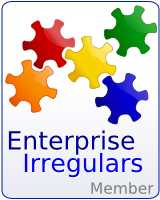Software's Sky is Not Falling
Today Sandhill.com posted an article by the Irregulars rebutting an earlier Sandhill article by Guy Smith. In that article, Smith makes some valid points about open source software and the challenges that incumbent (proprietary) vendors face. However, other statements (as well as the title) are overstated. My piece is on the 3rd page at the bottom (prime real estate!). Please let me know what you think as feedback is always welcome. Also, given space constraints and duplication issues (a few of us took exception to the same statements) a condensed version of my original piece was published. For your reading pleasure, I've included the original below. Also, Jason, Vinnie, Niel and Jeff posted on this subject as well.
------------------------------------------------------------------------------
I take issue with the assertion that "with little effort a commodity stack can be deployed for 95 percent of all IT buyers." I'm particularly dubious of this claim with regards to the application layer. SugarCRM, Compiere et. al. have had success and are doing some interesting things; incumbent vendors surely should not be (and, by the way, aren't) sitting still with regards to
Smith overstates the case when he says "any profitable segment in which there is no Open Source solution will soon enough have one." However, had he less sensationally stated that open source will continue to move up - the stack as well as into larger enterprises, I think he would be correct. So what will spur open source adoption? My sense is that open source application adoption will be driven largely by the intersection of three drivers: customer need, vendor push and community support.
Customer Need - Customers will be drawn to open source because of lower costs, freedom from vendor lock-in and a large community of available developers
Vendor Push - Software vendors (both open source and "traditional") will push adoption because it benefits them. They can potentially see improved margins, more efficient targeting of customers(price discrimination) and can provide a more tailored, useful product to the customer
Community Support - A strong community around an application can provide the elements necessary to success:
- Product development - ISVs and independent programmers extend core functionality, and contribute bug fixes
- Distribution - integration of open source product into larger software distributions as well as increased downloads due to network effect of word of mouth
- Services - community provides support (paid or free), education and implementation
I do not believe that open source application software is nearly at the stage that Smith claims it is. A "commodity stack" play is much likelier today, and in the near future, lower in the stack and into a limited (albeit, growing) part of the applications market. My sense is that it may be a while before there is wide scale adoption of open source solutions in areas such as PLM, SCM and SRM.
[Open Source]
[Sandhill]
[Irregulars]





